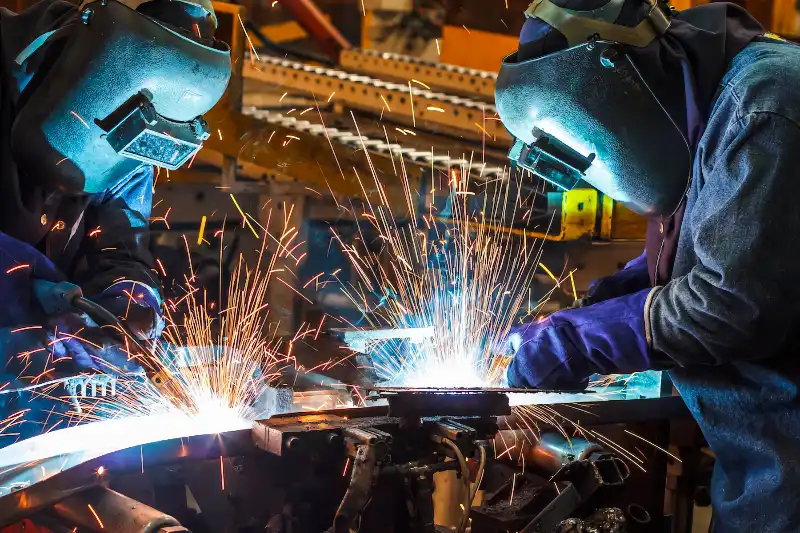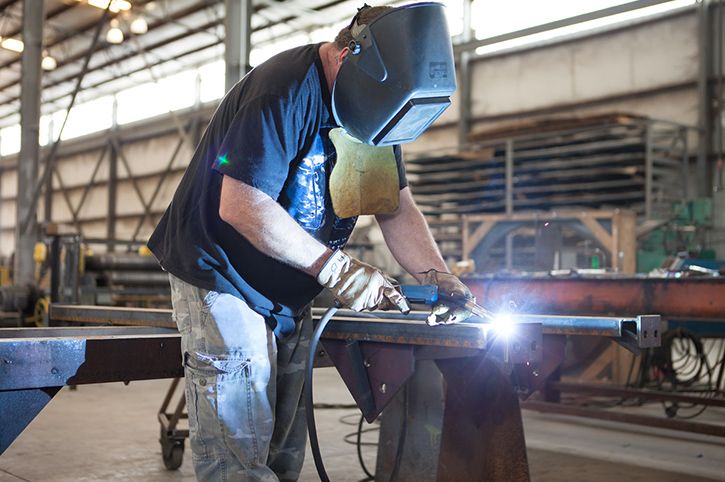All Regarding Welding: Secret Insights Into Techniques and Finest Practices for Success
Welding encompasses a variety of methods, each fit for certain materials and applications. Recognizing these methods, such as GMAW, SMAW, and TIG, is vital for attaining suitable results. Moreover, the best equipment and security techniques can not be ignored. As preparation and repairing play vital roles in the welding procedure, mastering these aspects can greatly improve the top quality of the end product. What are the crucial aspects that guarantee an effective weld?
Recognizing Different Welding Methods
Welding methods include a variety of techniques, each fit to particular applications and materials. Among the most typical techniques are Gas Steel Arc Welding (GMAW), Secured Metal Arc Welding (SMAW), and Tungsten Inert Gas Welding (TIG) GMAW, likewise recognized as MIG welding, is popular for its rate and versatility, making it suitable for slim materials. SMAW, or stick welding, is preferred for its simplicity and efficiency in exterior environments, specifically with thicker metals. TIG welding supplies accuracy and control, making it ideal for complex job and non-ferrous metals (Montana Mobile Welding and Repair Fabrication). Each technique has its distinct advantages and factors to consider, enabling welders to pick the most effective technique based on the job's requirements, product kind, and wanted outcomes. Comprehending these strategies is vital for successful welding
Necessary Welding Equipment and Devices
While various welding strategies need particular abilities, the ideal equipment and tools are similarly crucial for accomplishing high quality results. Necessary welding equipment includes welding devices, which vary depending on the strategy-- such as MIG, TIG, or stick welding. Protective equipment, consisting of headgears, aprons, and gloves, assurances safety and security and comfort during the procedure. On top of that, clamps and fixtures aid secure products in place, making sure accuracy in welds. Consumables like welding rods, wire, and protecting gas are likewise important elements that affect the quality of the weld. Devices such as cutters and grinders assist in surface area prep work and post-weld completing, contributing to a professional outcome. Purchasing top notch equipment eventually improves the effectiveness and effectiveness of welding projects.
Safety Practices in Welding
Correct security practices are important in the welding market to protect employees from prospective dangers. Welders should put on ideal individual safety devices (PPE), including helmets with appropriate shading, gloves, and flame-resistant clothing. Adequate air flow is important to minimize direct exposure to damaging fumes and gases created during the welding process. In addition, workers should be learnt the right handling of welding devices to stop crashes. Fire precaution, such as maintaining combustible products away from the welding location and having fire extinguishers easily available, are essential. Normal inspections of equipment and work areas can help determine potential threats prior to they lead to crashes. By adhering to these safety practices, welders can create a much safer working atmosphere and decrease threats related to their profession.
Readying Materials for Welding
Preparing materials for welding is an essential step that considerably influences the quality and integrity of the end product (Montana Mobile Welding and Repair Welding). Appropriate prep work entails cleansing the surface areas to get rid of pollutants such as corrosion, dirt, and oil, which can compromise the weld. Methods such as grinding, sanding, or making use of solvents are typically utilized to accomplish a tidy surface area. Additionally, making sure that the products fit together snugly is essential; gaps can cause weak welds. It's additionally vital to take right into account the positioning and positioning of the elements, as this will affect the simplicity of welding and the last end result. Lastly, selecting the ideal filler product and guaranteeing compatibility with the base steels is important for attaining strong, long lasting welds
Tips for Achieving High-Quality Welds
Achieving high-grade welds calls for interest to information and adherence to ideal practices throughout the welding process. Proper joint prep work is vital, ensuring surface areas are clean and cost-free from impurities. Selecting the appropriate filler material and welding strategy based on the base steels is essential for suitable bonding. Preserving consistent travel rate and angle while welding can protect against problems and promote harmony. Additionally, controlling heat input is essential; extreme warmth can result in warping and compromised joints. If needed, routinely examining the welds throughout the process allows for prompt changes. Employing proper post-weld therapies, such as cleaning and stress relief, can enhance the longevity and stability of the weld, eventually guaranteeing an effective result.
Repairing Typical Welding Issues
Welding often presents difficulties that can impact the top quality and integrity of the end product. Usual issues such as porosity, inconsistent weld beads, and getting too hot can develop, each requiring particular troubleshooting techniques. Understanding these problems is essential for welders to boost their abilities and achieve ideal outcomes.
Porosity Troubles Clarified
Porosity can often be forgotten, it remains a vital concern in welding that can jeopardize the honesty of an ended up product. Porosity refers to the visibility of tiny gas pockets within the weld bead, which can compromise the joint and lead to early failing. This problem typically develops from contaminants, moisture, or inappropriate securing gas insurance coverage during the welding procedure. To mitigate porosity, welders must verify that the base products are tidy and completely dry, utilize ideal shielding gases, and keep regular welding parameters. On a regular basis inspecting the tools and environment can likewise aid recognize prospective problems prior to they show up in the weld. Dealing with porosity efficiently is essential for attaining strong, long lasting welds that meet quality criteria.

Inconsistent Weld Beads
Irregular weld beads can greatly affect the quality and toughness of a finished product. Numerous aspects add to this problem, consisting of improper travel rate, incorrect amperage settings, and inconsistent electrode angles. When the welder relocates too promptly, a grain may appear narrow and do get more not have penetration, while relocating also gradually can cause too much accumulation. Additionally, utilizing the incorrect amperage can cause either undercutting or too much spatter, both of which concession weld stability. The welder's method, such as inconsistent lantern motion, can likewise cause irregular bead appearance. To reduce these troubles, welders need to concentrate on keeping constant, regulated movements and making sure proper equipment settings to accomplish harmony in their welds. Consistency is key to accomplishing solid and reputable welds.
Overheating and Bending Issues
Excessive heat throughout the welding procedure can bring about significant getting too hot and buckling problems, influencing the structural integrity of the workpiece. These problems often manifest as distortion, which can compromise alignment and fit-up, making further assembly challenging. Aspects adding to overheating consist of the option of welding criteria, such as voltage and travel speed, along with the kind of product being bonded. To minimize these issues, welders need to preserve consistent travel speed and proper warm input while keeping an eye on the workpiece temperature level. Additionally, preheating or post-weld warm treatment can help ease stresses triggered by fast air conditioning - Fabrication. Normal examination and adherence to ideal practices are essential in protecting against getting too hot and guaranteeing the long life and reliability of welded structures
Regularly Asked Questions
What Are the Profession Opportunities in the Welding Sector?
The welding industry supplies diverse career possibilities, consisting of placements as welders, assessors, engineers, and teachers. Specialists can operate in manufacturing, construction, aerospace, and automobile fields, gaining from solid demand and affordable salaries in different roles.
How Can I Improve My Welding Speed Without Compromising Top Quality?
To boost welding speed without compromising high quality, one ought to exercise effective methods, maintain devices, enhance settings, and boost hand-eye coordination. Regular training and looking for comments can likewise greatly add to achieving much faster, high-grade welds.
What Accreditations Are Available for Welders?
Numerous certifications exist for welders, including hot air welder those from the American Welding Society (AWS), the National Facility for Construction Education and Research Study (NCCER), and numerous industry-specific companies. These qualifications improve employability and demonstrate skill effectiveness.
Exactly How Does Welding Influence the Residences of Metals?
Welding affects the residential properties of metals by modifying their microstructure, which can lead to changes in ductility, toughness, and hardness. Warmth input and air conditioning prices during the process greatly influence these material qualities.
Can I Weld Dissimilar Metals Together?
